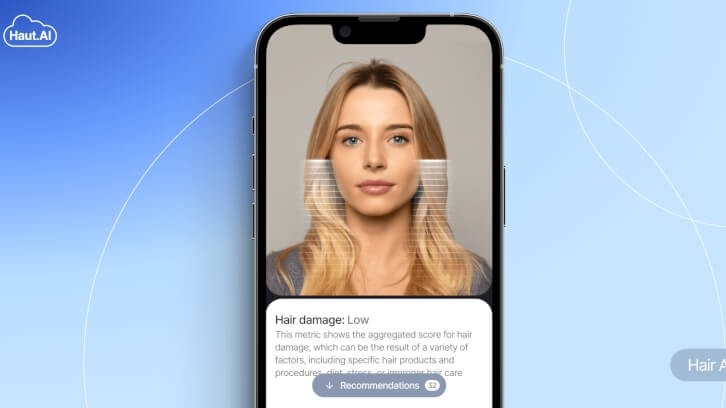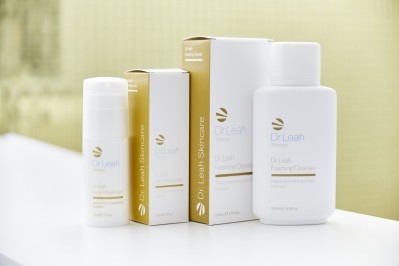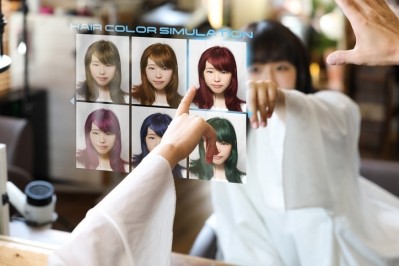Start the week with a startup: Haut.AI

Haut.AI, an Estonian-based beauty and skincare intelligence tools startup has just raised €2m in seed funding from LongeVC and Grupo Boticário, to support expansion for its no-code skincare e-commerce personalisation software, which is being dubbed: “the future of skin wellness”.
In May 2023, the company began to pilot SkinGPT, a virtual skincare try-on that enables image-to-image simulation of any skin condition using clinical claims.
The product, which is currently being tested out with a selected number of companies, uses cutting-edge AI to create synthetic images and apply skin conditions to input image data, so users can realistically view how their skin will change over time when they use certain skincare products.
CEO Anastasia Georgievskaya shares more on future plans, the challenges faced along the way, and how the company’s technology means there potentially won’t be a place for non-efficacious products in the future.
How Haut.AI is changing the game…
“It’s an AI model, but it utilises generative networks and can generate ‘skin condition’ on-demand. So, you can tell the system what type of skin you want to generate. For example, you can say “I want to generate 1,000 data samples of melanin-rich skin in Fitzpatrick scale skin tone five with enlarged pores” and the system will generate it for you in about 10 to 20 minutes.
When ChatGPT arrived, consumers learned how to generate text and images with generative AI, so we felt it was also the right time to market this technology.
Now you can generate how your skin will evolve using pretty much any skin care product if you're using it regularly. We built it based on real claims – we started to use claims from clinical trials to use AI to generate real effects.
We take data from before and after clinical testing and the system learns the dependencies; how skin transforms, and then you can simulate the fact for every new picture and it will be very natural because for the generation, if first analyses facial features and every generation will be unique.
So for example, if you want to generate improvement for particular skin type, first we'll know what are the baseline level parameters and then make a generation for every specific person.
I have my own skin care app with about three years history of my skin measurements. On this, I can see that some treatments are benefitting me personally more than others. For example: AHA and BHA acid peels and retinols are doing great for me even though for some people they can cause redness.
This can help companies change their products based on what works for particular people in different climates and seasons.”
How we started…
“The company started as a software developer for clinical purposes, so we worked in R&D product manufacturing for quite some time and had a chance to analyse multiple before and after tests.
We worked with a very different type of data, not just imaging, but also all types of omics data and data coming from different type of spectroscopies.
Our background is clinical and originally we were focusing more on clinical research and ageing research.
While we were working on clinical evaluation of skin and ‘before and after’ tests, we were excited by the fact that when you pick the right skin care products and use them consistently, they produce a great impact on your skin and the transformation can be breath-taking. And I'm not just talking about high-end, potent-ingredients products. I'm talking about something that you can just buy from any conventional store.
We built the SkinGPT engine first to generate before and after-effects of skin care products. We managed to build this generative AI system in 2021, so little bit before ChatGPT became so popular and everyone was talking about that. This allowed the company to become an expert in high-quality synthetic data generation for training and experimentation.”
The challenges we’ve faced…
“Some challenges were purely mathematical, for example, you need to have the data assets. You need to have computational resources because this type of technology can be extremely resource consuming with demanding algorithms.
The second issue was perception because when you were talking about generative AI in 2018 or even in 2021 people were not prepared for that. If you talked to someone about a generative adversarial network, people would just look at you and say “I don't understand. And why do you think it works?” So, this was a barrier for consumer application at the start. It was a bit ahead of its time, but now is the perfect time because we understand more about generative AI.
Another challenge was also how we could build AI that doesn't discriminate against anyone; that can work with very different phenotypes. So we ensured that we could build systems that performed equally well on different population cohorts and that the generation could be done equally well for different skin types, while also ensuring that we can test for biases.”
Where we are today…
“Goal number one for us is to continue innovating. Including some expansion in generative AI with our SkinGPT offering. We want be relevant in a really demanding market. Beauty consumers like to see new things; they like to experience new types of technologies and offerings.
But we will continue investing in the product development and our R&D at the same time. We believe that the industry also wants AI technology to become more widespread – not just to be a privilege of bigger brands and retailers – but also to some extent becoming market standard of how you're serving customers.
Of course, our plans also include expansion and growing our sales team and business development capacities to reach more customers globally.
SkinGPT is now in the R&D stage and being piloted with a selected number of companies and in the first quarter of 2024 we plan to release it more publicly and make it available to more clients.”
How we will disrupt industry…
“I think the beauty field is quite responsive to adopting new technologies. We already see more application of AI in automation, manufacturing and formulation testing.
While in the consumer-facing applications, personalisation is such an important part. Skin GPT is providing this higher level of personalisation and I think AI can help with to find a way to personalise at scale, so it becomes attractive for brands and retailers to do it.
From the R&D perspective, you can use our technology to first analyse before and after tests and collect claims at scale. For a very long time, collection of ‘before and after’ effects would be conducted on very small group, maybe 30- 40 respondents and it's quite hard to actually measure the real effect at scale: with thousands of consumers with very different phenotypes. So, AI technology helps you collect multiple data points.
Another thing is, if you have grasped enough data points, you can also showcase the real effect achieved on a population level. Being honest upfront and showing customers what's achievable in a certain timeline will help reinforce this commitment to treatment. The market is saturated, so you have to find a way to engage with the consumer and it's great if you can do it with this technology.
There are also multinational companies interested in understanding the effects of a certain skin care line on different population cohorts, as this will help them market to the right consumers. If they see that some groups are benefiting most from this product, it makes sense for them to go after these consumers, so that they can experience the most value.
Along with the clinicals software we also have ‘consumer perception’ built in too. That way, our clients can invite experts to rate the skin condition, as some metrics are not mathematically calculated are instead ‘perception based’, for example ‘glow’.
We can collect data about consumer self-perception, so they can provide better feedback on how they felt about the product.
Experts can also provide their opinion and we believe these three parts – consumer perception, expert opinion and instrumental measurement – makes the development cycle complete because it's addresses different aspects of what a product actually does, what consumers think and what also what experts think.”
Where we’re heading next…
“From the product perspective, we are constantly adding new features. Then we also work on video-based analysis, so it helps you capture more information.
We operate on biweekly sprints, so release software updates every two weeks and we believe the scale will help us reach more clients.
So we know that skin analysis can be used by everyone, not only the top 100 companies. And this is our plan to continue delivering software that can be affordable for companies of different sizes.
We are also looking into something similar but for hair and scalp analysis too; examining different factors of hair and scalp health.”
Future insights: AI in the beauty industry
“There is now a very strong push for claims. Functional beauty: products that deliver results and as a way of that, I think at AI is also serving to push towards more effectiveness through personalisation and also through being able to better identify consumer preferences.
The main goal for AI from a manufacturing perspective is automation. So, can we develop faster? Can we develop with fewer expenses?
From the consumer-facing side of things, it will be mostly driving personalisation so when someone's thinking of buying a new product, they can find out if that product is right for them.
Even beyond that, by collecting and analysing data from end consumers in anonymous way and knowing what the very real concerns are, manufacturers can even make a decision of what products to manufacture and where and when. Because some countries have more seasonal differences and people respond differently to the weather. In the sun, some people’s skin will become red, some will get pigmentation, some will get tanned, and for someone nothing will happen. So even knowing this type of data can help improve the strategies and consumer engagement to whole new level.”






















